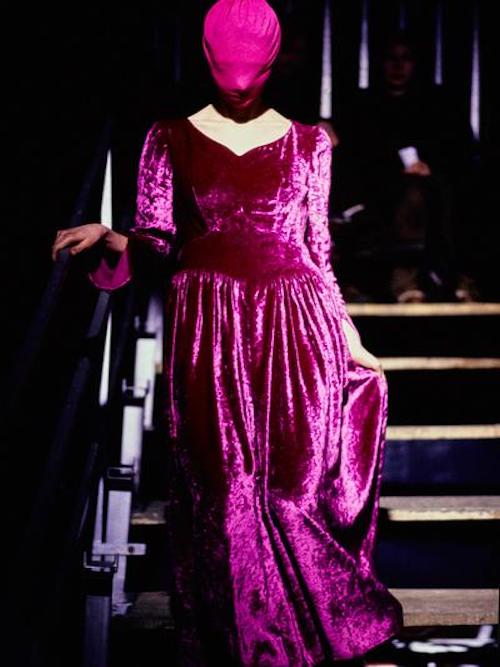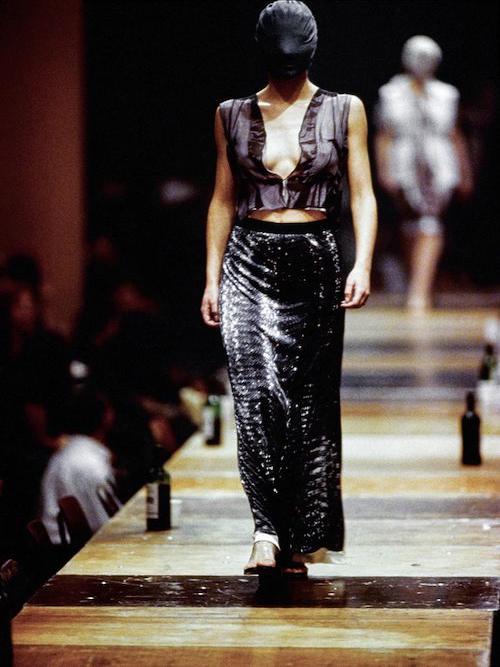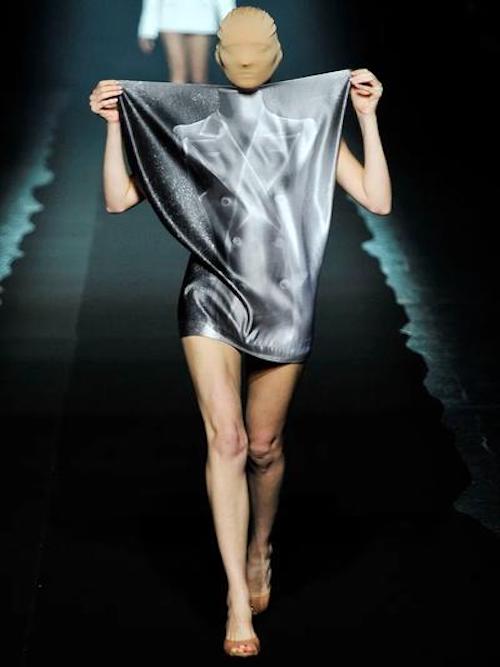MARTIN MARGIELA
Martin Margiela became known for his ubiquitous deconstruction and transformation, in which he reinvented the volumes and shapes of a garment. He often modified found object's original use, playfully turning them on their head. Margiela's vision was always to maintain the focus on the clothes.
In the latter half of the past century, Martin Margiela made his name synonymous with avant-garde and deconstructivism movements in fashion. His label's philosophy lay in absolute creative freedom and independence from the general laws of clothing design: starting from jewelry made out of dyed ice and ending with presentations held on the outskirts of Paris. Throughout his career in the industry, the designer did his utmost to preserve the anonymity behind his image, rarely giving an interview or revealing his face. Even in the group photos of Margiela's team, one chair always remained empty — the one meant for the designer himself.
Little is known about Margiela's upbringing. He was born in 1957, in Genk, Belgium, and got first interested in fashion while still a child, amongst others inspired by the works of Paco Rabanne, some of which later reflected in the MMM Artisanal Line. After graduating from Antwerp's Royal Academy of Fine Arts in 1979, Martin Margiela worked as a freelance designer for several years, later taking an apprenticeship at Jean Paul Gaultier's atelier his assistant. Three years later, in 1988, he co-founded his eponymous label with a friend and business partner, Jenny Meirens, who created the famous blank tag — brand's hallmark.
The most noteworthy detail in Margiela's clothing was the nameless, somewhat oversized white-label, identifiable on the outside of the garment by four white stitches attaching its corners. The label itself carried neither brand identification nor size indication and therefore seemed utterly extraneous. The conspicuousness of the white stitches increased the visibility of something that initially did not seem intended to attract attention. Similarly, Margiela, the designer, wished to disappear behind his work in a decade characterized by extreme narcissism, in which other designers attained superstar status.
Another crucial part of Margiela's career, apart from the pioneering work he did at MMM, were his years as the creative director of Hermès womenswear line. Albeit most awaited to see more of his signature eccentric designs, this time, Martin Margiela focused on garment's comfort and convenience instead of its appearance: every piece was thought through to an extraordinary extent, whether it was a strict double-breasted blazer or a soft cashmere vareuse. Although the fashion house's female clientele almost instantly fell in love with the new Hermès, some still said that Margiela's work there lacked originality or was just too simple. Over the years, those statements proved untrue as no one could compete in detailization and utility with a Margiela-era Hermès garment.
His work was deconstructionist because he took not only the garment itself but also the system that produced it. Ideas about haute couture, tailoring, high or low fashion, innovation, and commercialism do not arise from an apolitical standpoint, nor are they formulated as criticisms of established fashion assumptions. Margiela's work began with a set of analyses questioning the established theories of what already exists to search for alternatives that can be brought to life, both within and outside the system. Martin Margiela's impact on the fashion world is truly immeasurable. His forward-thinking designs inspired numerous couturiers — Raf Simons, Alexander McQueen, and Marc Jacobs included. One can say with certainty: artists like Martin Margiela don't appear more often than once in a century.






